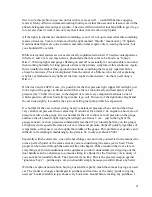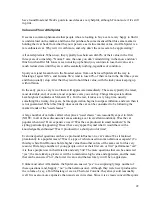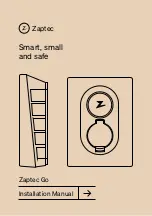
8
was very, very good. The exterior door handles were switched from an
”
external handle-and-
button
„
to an innovative semi-recessed design. Windshield wipers were changed from a then-
unusual interlocking style (the blades pointed inward at each other and swung to the outside) to a
more conventional side-by-side arrangement. The windshield rake was also increased somewhat,
improving the car
“
s looks, and probably its aerodynamics as well.
In 1969 the engine displacement was increased to 1779 cc's, allowing Alfa to call the Spider a
"1750 Spider", evoking a famous pre-war Alfa type. The engine produced more power, but
retained the "zippy" feel and throaty exhaust that the 1600cc motors had. Alfa added a rear sway
bar sometime around 1971, substantially improving the handling of the cars by greatly reducing
the understeer exhibited by the Duettos.
In 1969 for the US market Alfa introduced the SPICA fuel-injection system for the first time.
Created primarily for the famous Type 33 race car series, it was based on a diesel injection pump.
This all-mechanical system provided precise fuel metering, allowing Alfa to squeak under the
emissions laws of the US for several years without sacrificing power, driveability, or adding a
catalyst. With the possible exception of Porsche, Alfa Romeo was the best adapted and most
driveable car make available in the US at that time.
Unfortunately the new SPICA system was kept a tight secret at Alfa (perhaps, because of the
SPICA system
“
s relationship with Alfa
“
s racing division, this was not entirely as inexplicable as
would at first appear), and enthusiasts in the US greeted it for the most part with great suspicion.
In actuality, the system provides better fuel control than the dual-Weber setup, without
sacrificing any power or driveability. It is very straightforward, if somewhat unique, and once the
proper manuals and (relatively) inexpensive equipment are acquired, very simple to set up and
maintain. In delivery, it is quite similar to the "tuned port" injection systems introduced in
American cars in the mid
…
80s, but is not anywhere near as picky about fuel quality.
None of this was clear to owners of Spiders in those days, so a sizable percentage were converted
to Weber carburetors. Because today's emissions inspection requirements are becoming more
exacting, and workings of the of the SPICA pump are becoming far better understood, an
appreciable number of these Weber cars are being re-converted back to the SPICA setup. In
Europe, where Spiders were nowhere near as popular and hence less common, people are
actually beginning to import the cars back from the US, so they are now experiencing (some
would say being afflicted by) the same troubles and joys of the SPICA system. A SPICA
equipped car will probably have the only working example of a mechanical computer that you
will ever see (except for maybe a slide rule). Once you understand the system, it
“
s really cool.
For a more complete set of recommendations about what to look for and what to avoid when
buying a SPICA equipped Alfa, I refer the reader to Pat Braden's Alfa Romeo Owner's Bible
(available from Robert Bently publishers), at this writing obtainable at most major book stores.
In addition to the drivetrain changes, Alfa began a slow process of improving the quality of the
interior. It was during the early Series 2 cars (probably 1970, but I'm not sure) that the well-
known (and sometimes oft-cursed in the automotive press) "dual pod" padded dash was









































